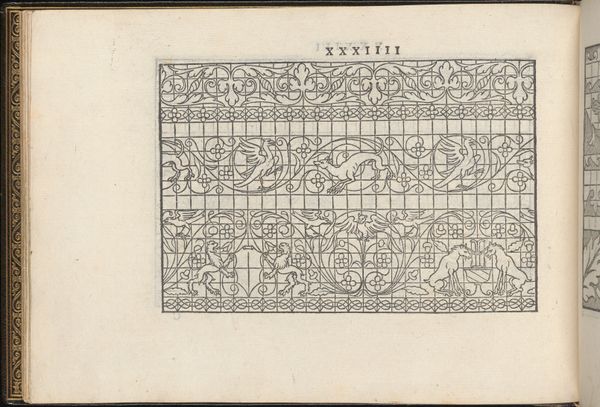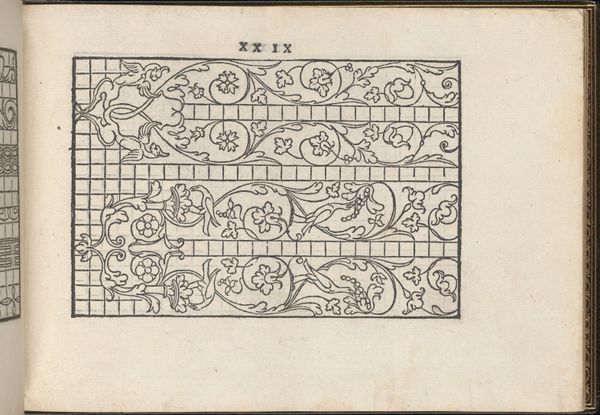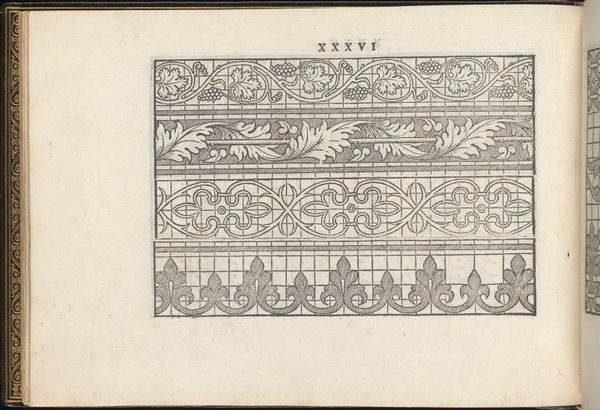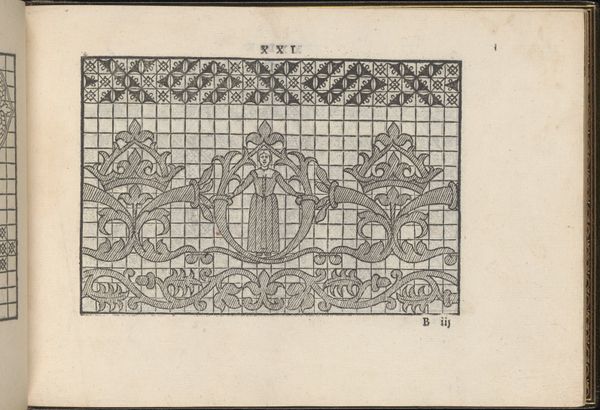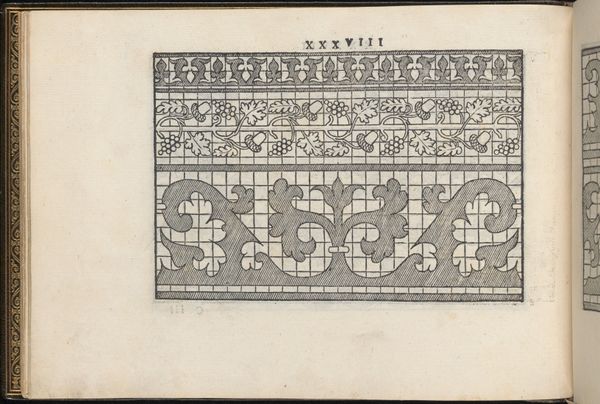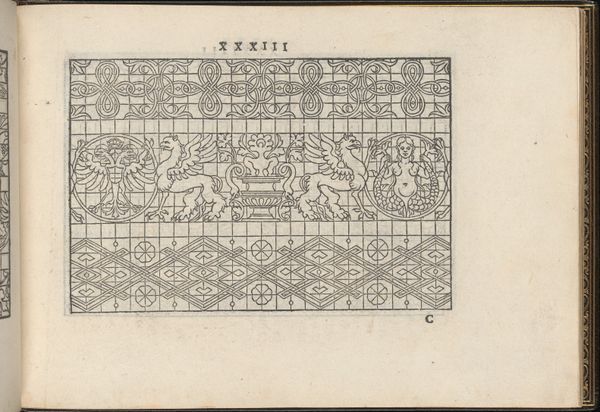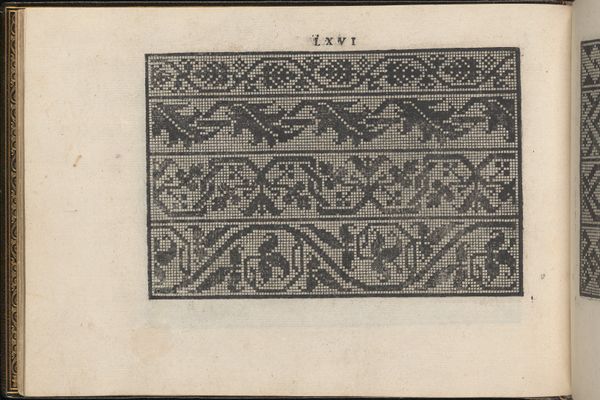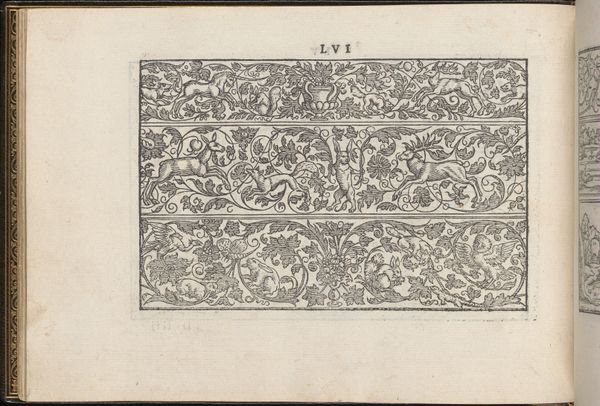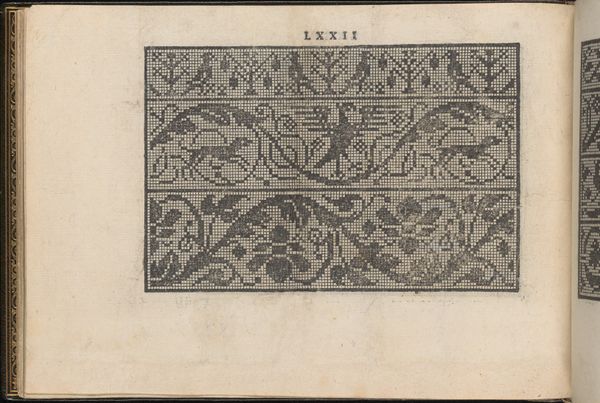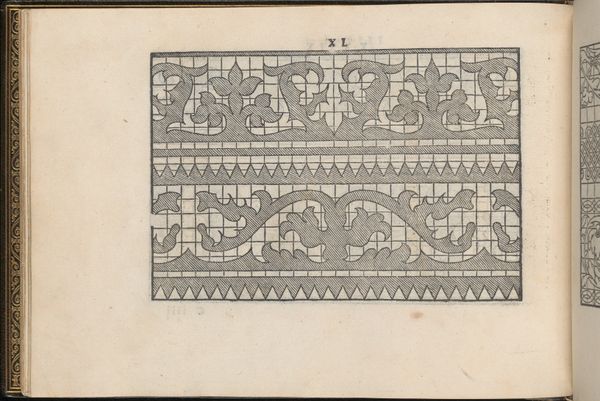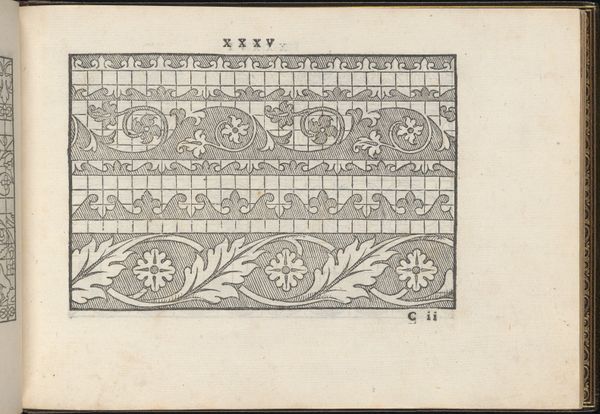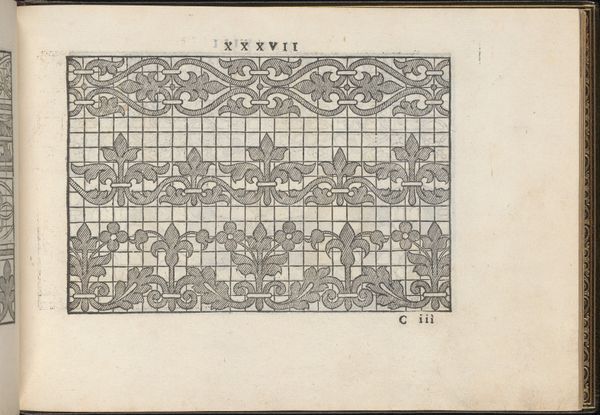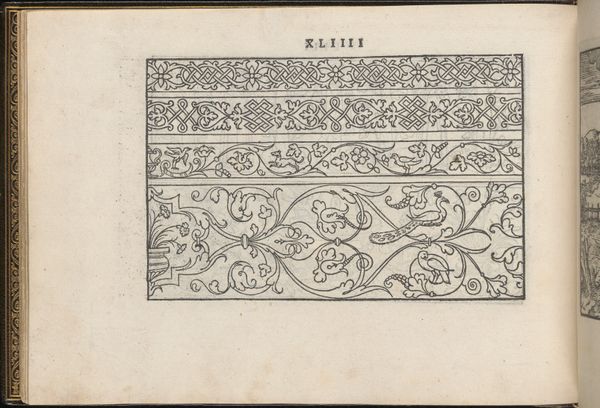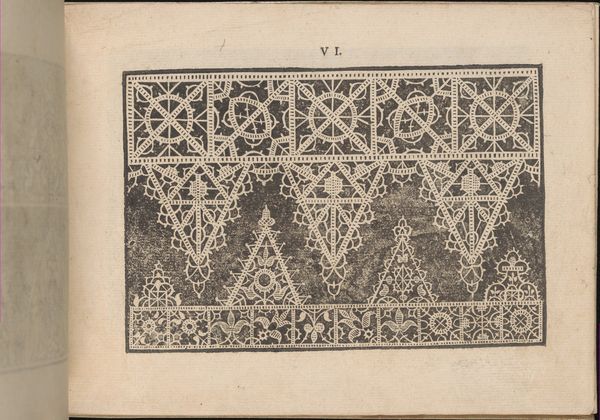
La Vera Perfettione del Disegno di varie sorti di recami, page 21 (recto) 1567
0:00
0:00
drawing, graphic-art, print, engraving
#
drawing
#
graphic-art
# print
#
figuration
#
11_renaissance
#
geometric
#
line
#
engraving
Dimensions: Overall: 6 5/16 x 8 7/16 in. (16 x 21.5 cm)
Copyright: Public Domain
Editor: This is "La Vera Perfettione del Disegno di varie sorti di recami, page 21 (recto)" a 1567 engraving by Giovanni Ostaus. I am fascinated by how these intricate patterns could be translated into embroidery; the precision is impressive. What does this piece say to you? Curator: This engraving provides a valuable window into the social history of the Renaissance. It wasn't just art for art's sake. These pattern books played a crucial role in disseminating designs and skills, empowering women, specifically, in the domestic sphere. Do you see how these images, accessible through printed books, democratized design? Editor: Yes, now that you mention it, I see it differently! So, these weren’t necessarily ‘high art’, but almost functional templates? The commercialization of art, even back then! Curator: Precisely! Consider the grid underlying the designs. It's not just decorative; it's a practical tool for artisans to scale up the designs. And look at the motifs – the putti, the interlace. They reflect the classical revival prevalent in Renaissance art but repurposed for needlework. How do you think the cultural perception of embroidery shaped its imagery? Editor: Interesting…so these figures were more than mere decorations, but had societal meaning…And it's surprising how intertwined "high art" and everyday crafts were! I’ll have to think more about the status of such artworks back then. Curator: Indeed. It highlights the complex relationship between art, craft, and the evolving roles and values within Renaissance society. Understanding these contexts enriches our interpretation. Editor: Absolutely! This gives a lot to think about; looking at it not just as a drawing but a societal object changes everything. Curator: It’s all about perspective.
Comments
No comments
Be the first to comment and join the conversation on the ultimate creative platform.
